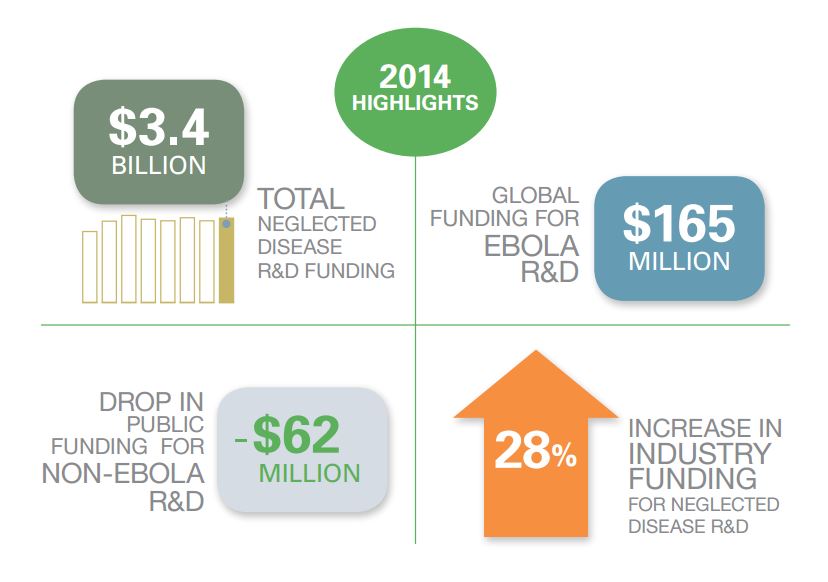 Medical research and development (R&D) is a difficult concept for many to translate into a tangible outcome. Yet the future of medical innovation and the new medicines it spawns is very much dependent on the R&D process. The tough reality is – most of the time – we simply do not know what the possible outcomes will be until they emerge. To put it another way, for every new medicine that becomes available to patients, there are thousands of other potential compounds that failed somewhere along the R&D process. And while significant strides have been made for many diseases and the pipeline for new medicines – broadly – has never been more promising, there are still many disease areas where investment in R&D is significantly lacking.
Medical research and development (R&D) is a difficult concept for many to translate into a tangible outcome. Yet the future of medical innovation and the new medicines it spawns is very much dependent on the R&D process. The tough reality is – most of the time – we simply do not know what the possible outcomes will be until they emerge. To put it another way, for every new medicine that becomes available to patients, there are thousands of other potential compounds that failed somewhere along the R&D process. And while significant strides have been made for many diseases and the pipeline for new medicines – broadly – has never been more promising, there are still many disease areas where investment in R&D is significantly lacking.
Just last week, Policy Cures released its annual G-FINDER report, which monitors the global investment in medical research, discovery, and development for diseases typically neglected from R&D dollars, including Ebola and additional hepatitis C genotypes. While the report estimates that in 2014, $3.4 billion was invested in neglected disease R&D – a 2.7 percent public funding increase, it’s important to note the increase is due in large part to the immediate investment thrown into mitigating the 2014 Ebola outbreak in West Africa. The Ebola outbreak, which also made its way to the U.S., served as the catalyst for the urgent development of a treatment to save lives. However, when taking Ebola R&D out of the equation, public funding for neglected diseases decreased by $62 million or 3.1 percent.
 While global investment as a whole has dropped, investment by the private biopharmaceutical industry is the exception. The biggest sectoral funding change was from the innovative biopharmaceutical industry which increased by $98 million, or 28 percent. The pharmaceutical industry is the world’s second largest funder of research into neglected tropical diseases following the NIH.
While global investment as a whole has dropped, investment by the private biopharmaceutical industry is the exception. The biggest sectoral funding change was from the innovative biopharmaceutical industry which increased by $98 million, or 28 percent. The pharmaceutical industry is the world’s second largest funder of research into neglected tropical diseases following the NIH.
This increase was largely invested in non-Ebola disease R&D, including in HIV/AIDS and malaria. America’s research-based biopharmaceutical companies have been a staunch supporter and driver of medical innovation and continue to lead the world in the development of treatments and cures, but there is always more to be done. Enhanced investment by the industry and the public sector is what makes the impossible possible. We should prioritize all medical innovation as urgent and not wait until it is almost too late. We must learn from the recent Ebola crisis and understand that we simply cannot afford to put a hold on innovation until millions are at risk, or until a rare or neglected disease reaches our shores.



 Medical research and development (R&D) is a difficult concept for many to translate into a tangible outcome. Yet the future of medical innovation and the new medicines it spawns is very much dependent on the R&D process. The tough reality is – most of the time – we simply do not know what the possible outcomes will be until they emerge. To put it another way, for every new medicine that becomes available to patients, there are thousands of other potential compounds that failed somewhere along the R&D process. And while significant strides have been made for many diseases and the pipeline for new medicines – broadly – has never been more promising, there are still many disease areas where investment in R&D is significantly lacking.
Medical research and development (R&D) is a difficult concept for many to translate into a tangible outcome. Yet the future of medical innovation and the new medicines it spawns is very much dependent on the R&D process. The tough reality is – most of the time – we simply do not know what the possible outcomes will be until they emerge. To put it another way, for every new medicine that becomes available to patients, there are thousands of other potential compounds that failed somewhere along the R&D process. And while significant strides have been made for many diseases and the pipeline for new medicines – broadly – has never been more promising, there are still many disease areas where investment in R&D is significantly lacking.
